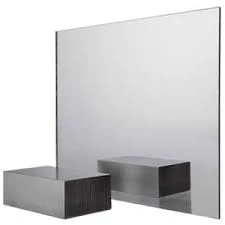

The Benefits and Applications of Tinted Toughened Glass
In modern architecture and design, the use of tinted toughened glass has become increasingly popular due to its unique combination of aesthetic appeal and high durability. This type of glass not only enhances the visual appeal of buildings but also provides essential functional benefits that make it suitable for a wide range of applications. In this article, we will explore what tinted toughened glass is, its benefits, and its various applications in contemporary construction and design.
Understanding Tinted Toughened Glass
Tinted toughened glass is a type of safety glass that has undergone a special heating process, known as tempering, to increase its strength. The tinted aspect refers to the added color which can reduce glare, enhance privacy, and control solar heat gain. The tint can be applied during the manufacturing process, allowing manufacturers to produce glass in a variety of colors and shades. The result is a material that not only meets safety standards but also offers aesthetic versatility.
Benefits of Tinted Toughened Glass
One of the primary benefits of tinted toughened glass is its increased strength and resistance to breakage. Regular glass can shatter upon impact, posing safety hazards in places where human traffic is high. In contrast, toughened glass is approximately five to six times stronger than standard glass, making it a popular choice for high-traffic areas and applications where safety is paramount.
Another significant advantage is its ability to control solar heat gain. Tinted glass helps to block harmful UV rays and reduce the amount of solar radiation entering a space, thus lowering energy costs by minimizing the need for air conditioning and other cooling systems. This is particularly beneficial in regions with hot climates, where overheated buildings can become uncomfortable and costly to cool.

Additionally, tinted toughened glass offers enhanced privacy
. By choosing darker shades, property owners can ensure that the interior remains hidden from outside view while still allowing ample natural light to fill the space. This feature is especially valued in commercial buildings such as offices, where privacy is often a concern.Applications of Tinted Toughened Glass
The versatility of tinted toughened glass allows it to be used in various applications both in residential and commercial settings. One of the most common uses is in facades, where the tinted panels enhance the building’s exterior while providing practical benefits such as energy efficiency and glare reduction. They are also used in windows and doors, allowing contractors and builders to meet aesthetic design requirements without sacrificing functionality.
In addition to structural uses, tinted toughened glass is widely used in shower doors, partitions, and balustrades. These applications benefit from the glass's strength and safety features while contributing to a sleek and modern look. In retail spaces, tinted glass can be used in display cases, offering a high-end appearance that attracts customers while protecting merchandise.
Moreover, tinted toughened glass is often utilized in vehicles, including cars, buses, and trains. The glass enhances the overall look of the vehicles while providing critical protection against UV radiation and improving energy efficiency by keeping interiors cooler.
Conclusion
Tinted toughened glass offers a wealth of benefits that make it an excellent choice for various architectural and design applications. From its exceptional strength and safety features to its aesthetic versatility and energy-efficient properties, this glass type meets modern demands for both functionality and style. As the construction industry continues to seek innovative and efficient materials, tinted toughened glass is sure to play a prominent role in the future of building design and architecture.